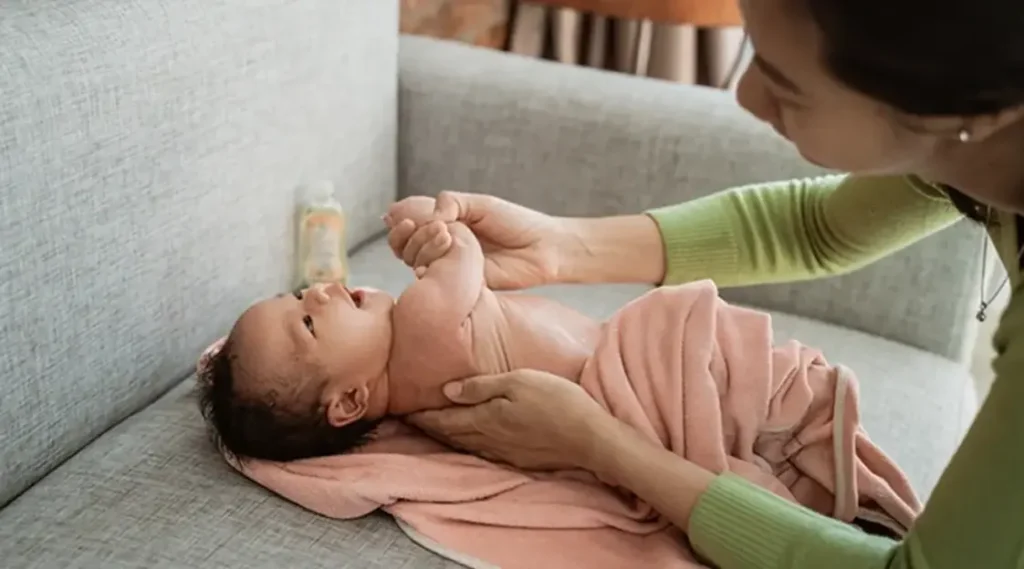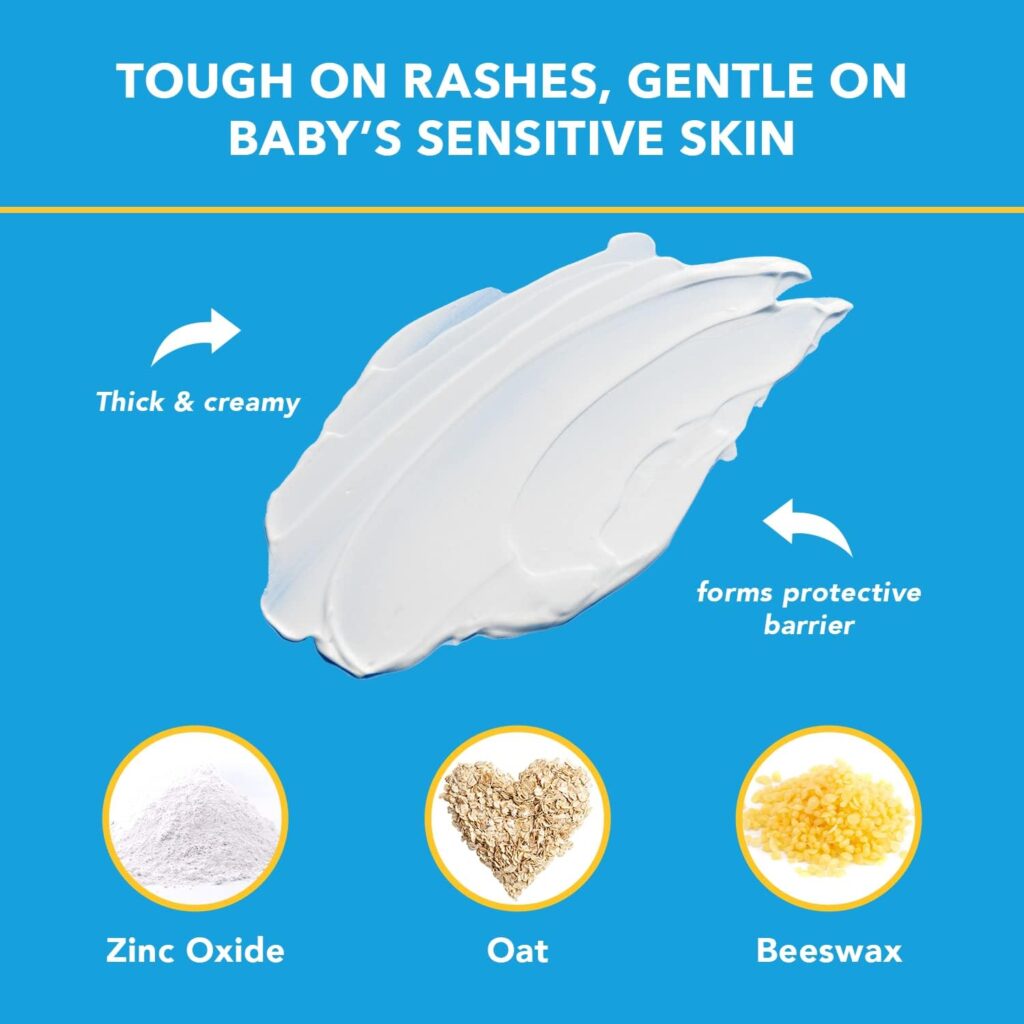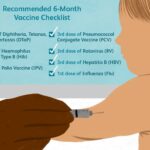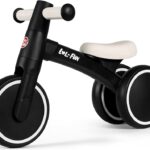How Do You Know If Your Baby Has Diaper Rash? Your baby may have diaper rash if their skin appears red, inflamed, and possibly with bumps in the diaper area. Signs of discomfort during diaper changes can also indicate a rash.
Diaper rash is a common skin irritation that can leave your little one feeling uncomfortable. This issue typically emerges in the diaper-clad regions, including the buttocks, thighs, and genital area. While it’s most prevalent in babies aged 9 to 12 months, it can occur at any time during the diaper-wearing stage.
Prompt identification and treatment are crucial to soothe your baby’s skin and prevent further irritation. Understanding the telltale signs and staying vigilant during diaper changes are the first steps in managing diaper rash. Keeping your baby dry and clean, using appropriate skin care products, and often changing diapers help maintain healthy skin and avoid the distress caused by diaper rash.
Spotting The Early Signs Of Diaper Rash
Parents often wonder how to tell if their baby is suffering from diaper rash. Knowing the early signs is crucial for timely treatment. Here, we’ll explore the indicators to watch for, ensuring you can swiftly soothe your little one’s discomfort.
Visible Redness And Irritation
One of the first signs of diaper rash is a noticeable change in the skin’s condition. Check for these signs:
- Red patches on the baby’s bottom or genital area.
- Skin looks swollen or feels warm to the touch.
- Presence of small red spots or sores.
Changes In Baby’s Mood
The onset of diaper rash can also affect your baby’s temperament. Observe for these mood changes:
| Mood Change | Possible Reason |
|---|---|
| Increased fussiness | Discomfort from rash irritation. |
| Crying during diaper changes | Pain or stinging caused by rash. |
| Disrupted sleep patterns | Itching or discomfort while lying down. |
Quick action is essential at the first sign of discomfort. Early detection means a happier baby and a more comfortable healing process.
:max_bytes(150000):strip_icc()/How-to-change-a-diaper-289239-f3333dfdf73049318a1b155f99540060.png)
Credit: www.verywellfamily.com
Typical Triggers Of Diaper Rash
Every parent dreads the red, irritated skin of a diaper rash on their baby’s bottom. Knowing what triggers this discomfort helps with prevention and timely treatment. Let’s look at the typical culprits behind diaper rash.
Prolonged Exposure To Moisture
A consistently wet environment is a common trigger for diaper rash. Moisture from a wet or soiled diaper can break down the skin’s protective barrier. This makes the tender skin of babies more prone to irritation and infection.
Friction From Diapers
Constant rubbing against the skin can lead to a rash. Ill-fitting diapers and rough materials generate friction. This irritates the baby’s delicate skin, laying the groundwork for rash development.
Introducing New Foods
As babies start on solids, their stool changes. This can sometimes prompt a diaper rash. New foods can alter the stool’s pH level and frequency, potentially causing skin irritation.
Diaper Rash Or Something More Serious?
Seeing a red, irritated bottom on your baby may raise concern. Is it just a diaper rash or something that needs a doctor’s attention? It’s essential to recognize the signs and understand when to seek help. This section will guide parents in differentiating between common diaper rash and more serious conditions.
Differentiating Rash Types
Most babies experience diaper rash at some point. It usually appears as a faint redness. More serious rashes might be intense in color, spread beyond the diaper area, or come with other symptoms.
- Common Diaper Rash: Mild redness, slight swelling, warm to the touch.
- Fungal Infection: Bright red, may have pus, and often includes a ring around the edges.
- Allergic Reaction: Red, possibly with bumps or blisters, after trying new products.
- Bacterial Infection: Intense redness, fever, oozing spots, or blisters.
Observe the rash closely and note any changes. Consistency in appearance often points to a simple rash. Variations in color, size, and additional symptoms might warrant further investigation.
When To Consult A Pediatrician
It’s crucial to know when a diaper rash requires medical advice.
- If a rash doesn’t improve with home care within 2-3 days.
- Should fever accompany the rash?
- When blisters, boils, or pus-filled sores appear.
- If the baby seems in pain or is more irritable than usual,.
- When the rash spreads beyond the diaper area.
Ruling out serious issues can bring peace of mind. Seek expert guidance if the rash persists or your baby’s well-being seems affected. Remember, your pediatrician is there to support you and your little one, offering the right care at the right time.
Key Areas Where Diaper Rash Emerges
Diaper rash can be a cause of discomfort for your little one, and as a parent, identifying the key areas where diaper rashes emerge is crucial for quick and effective treatment. Recognizing the signs early can help soothe your baby’s discomfort and speed up healing.
Recognizing Affected Spots
Diaper rash typically appears in areas where the diaper touches the skin. Look for red, puffy skin in these hotspots:
- Buttocks: The most common area to check.
- Genitals: Both boys and girls are prone here.
- Thighs: Look at the folds of the skin.
Rashes may also have a different texture or look like pimples.
Checking Less Obvious Places
It’s important to not overlook the less obvious places where diaper rash can develop:
- Lower abdomen, particularly under the diaper’s elastic band.
- Upper thighs, near the diaper’s leg openings.
- The lower back area, especially if your baby lies on their back often.
Take extra care during diaper changes to inspect all these areas thoroughly.
Skin Texture And Diaper Rash
Diaper rash is a common concern for new parents. Knowing how to recognize the signs on your baby’s skin is crucial. This section delves into the changes in skin texture that can indicate a diaper rash.
Identifying Bumps And Lesions
One of the first signs of diaper rash is the appearance of bumps or lesions on your baby’s skin. These can look like:
- Small red bumps clustered together
- Patches of reddish skin
- oozing lesions in severe cases
Checking regularly, especially after diaper changes, helps catch these early indicators.
Assessing Puffiness And Severity
Puffiness or swelling in the diaper area is another telltale sign. To assess the severity of a diaper rash:
| Severity Level | Indicators |
|---|---|
| Mild | Light redness and some puffiness |
| Moderate | Bright red skin and more pronounced swelling |
| Severe | Intense redness, swelling, and possibly bleeding |
Gentle touch helps gauge discomfort levels; crying or fussiness during changes may suggest pain associated with a severe rash.
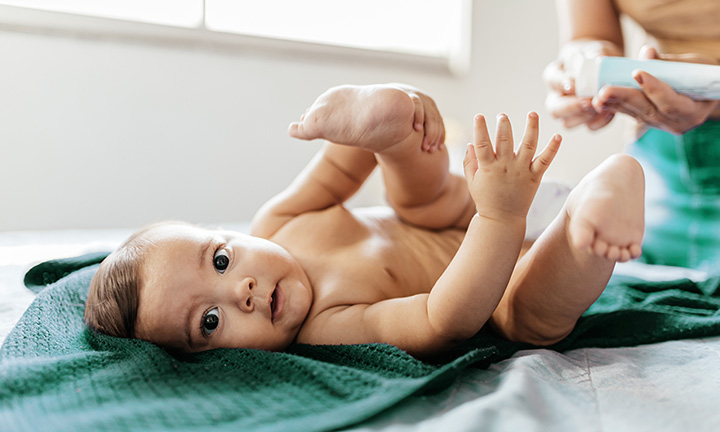
Credit: www.pampers.com
Effective Cleaning Techniques To Avoid Irritation
Diaper rash is common in babies but preventable. Proper cleaning can help avoid irritation. Below are ways to keep your baby’s skin healthy and rash-free.
Gentle Wiping Practices
To minimize discomfort, follow these guidelines:
- Use soft, fragrance-free wipes.
- Blot gently; don’t rub the skin.
- Clean from front to back to prevent infection.
- Allow the skin to air dry before putting on a new diaper.
Choice Of Water And Cleansers
Selecting the right water and cleaners is crucial.
- Use lukewarm water for cleansing.
- Choose mild, hypoallergenic cleansers.
- Avoid products with alcohol or fragrance.
- Consider using a soft cloth and water for sensitive skin.
These steps help prevent diaper rash and keep your baby comfortable.
Choosing The Right Diapers To Prevent Rash
Choosing the right diapers for your baby can significantly reduce the risk of diaper rash, a common skin irritation among infants.
Materials And Breathability
Diapers come in various fabrics. Some trap moisture, while others wick it away. A breathable diaper is crucial for preventing rash. Moisture-trapping diapers create a warm, damp environment, perfect for rash development.
To ensure optimal airflow, choose diapers labeled as “breathable”. Materials such as cotton blends and special mesh liners in some disposable diapers offer better air circulation. Look for features like:
- Moisture-wicking fabric – Keeps skin dry
- Alcohol-free – Less irritating to skin
- Natural materials – Reduce potential allergens
Sizing For Comfort And Protection
Selecting a diaper that fits your baby properly is as important as the material. A snug fit prevents leakage, which can irritate your baby’s skin. Conversely, too tight a diaper restricts airflow and may cause chafing.
Use the following tips to find the perfect fit:
- Measure your baby’s waist and legs
- Refer to the brand’s sizing charts
- Adjust as your baby grows
- Check for elastic edges for a better fit
A good rule of thumb is you should be able to fit two fingers under the diaper’s waistband. This ensures the diaper is snug yet comfortable.
Home Remedies For Mild Diaper Rash
Welcome to the cozy corner of home remedies for soothing your little one’s mild diaper rash. With gentle, natural solutions, you can help your baby find relief without a trip to the pharmacy.
Natural Oils And Creams
Mild diaper rash can often find relief with natural oils and creams. These are easy to find and safe for a baby’s skin.
- Coconut Oil: A natural moisturizer, it has antibacterial properties.
- Olive Oil: Rich in vitamins, it helps in healing and soothing skin.
- Zinc Oxide Cream: A mild barrier cream to protect the skin.
Apply a thin layer of your chosen oil or cream to your baby’s clean, dry bottom. This creates a barrier to moisture, which can soothe and heal the rash.
Air Time And Exposure
Giving your baby’s bottom some air time is essential for healing diaper rash. Letting the skin breathe aids in drying out the rash and preventing further irritation.
- Lay your baby on a towel without a diaper.
- Let them play or nap like this for a while.
- Ensure the room is warm and free of drafts.
This exposure allows the air to naturally soothe the rash and promote healing. Do this several times a day, especially after baths.
The Role Of Dietary Factors In Diaper Rash
Understanding the role of diet in diaper rash is crucial for all parents. Certain foods may cause irritation or an allergic reaction that can manifest as diaper rash. Identifying and managing these dietary factors offers a proactive way to prevent and address this common issue. Let’s explore how food allergies, sensitivities, and hydration play a vital part in your baby’s skin health.
Food Allergies And Sensitivities
When babies have food allergies or sensitivities, their bodies may respond with a skin reaction, including diaper rash. Here are key indicators that dietary factors might be affecting your baby’s skin:
- Introducing new foods: Diaper rash can sometimes occur as new foods are introduced into a baby’s diet.
- Show signs of discomfort: Along with the rash, babies might also seem unusually fussy or gassy after eating certain foods.
- Changes in stool: Look for changes in the frequency, consistency, or color of the baby’s stool.
- Immediate family allergies: If parents or siblings have food allergies, your baby might share them.
Keep a food diary to track what your baby eats and note any reactions. It helps to identify patterns and potential allergens.
Hydration And Rash Prevention
Good hydration is another factor that can help prevent diaper rash. A hydrated baby is likely to have fewer irritants in their urine, which can reduce the risk of diaper rash. Here’s what parents can do:
- Offer breastmilk or formula regularly. These are crucial for maintaining hydration in your baby.
- If your baby is older, include water in their diet.
- Monitor diaper wetness: Change diapers promptly to keep the skin dry and limit exposure to irritants.
By ensuring your baby stays well-hydrated, you’re also supporting their overall health and well-being.
Understanding dietary factors offers a pathway to both manage and prevent diaper rash. Paying attention to your baby’s reaction to certain foods and their hydration levels is essential in maintaining healthy, happy skin.
Necessary Times To Change A Diaper
Knowing when to change a diaper is key to preventing diaper rash. Consistent changes keep your baby dry and comfortable. Let’s explore the essential times to consider.
After Sleep Cycles
Babies often wake up with a wet or soiled diaper. Changing the diaper post-sleep protects their delicate skin. Make it a habit to check:
- After naps during the day
- First thing in the morning
Following Feedings
Eating can trigger the need for a diaper change. Babies usually need a new diaper:
| Directly after breastfeeding |
| After bottle-feeding |
Stay vigilant during these times to keep your baby happy and rash-free.
Educating Caregivers On Rash Prevention
Educating caregivers on rash prevention starts with understanding the signs and steps to avoid diaper rash. A red, inflamed, and sometimes bumpy skin area can signal the onset of diaper rash. Bonus points if you can make each diaper change a constructive session for skin health. Learn the smart tips to keep your baby’s bottom as happy as their smile!
Guidelines For Babysitters And Relatives
First-time babysitters and relatives may need a quick rundown on diaper rash prevention. Offer these crystal-clear tips:
- Keep baby’s skin clean and dry. Always wipe from front to back.
- Change diapers often. Don’t leave wet or soiled diapers on for too long.
- Apply barrier creams if necessary. Zinc oxide-based creams are golden.
- Avoid tight-fitting diapers. Let skin breathe to prevent irritation.
- Pat baby’s skin instead of rubbing. Gentle care goes a long way.
Creating A Diaper-changing Schedule
A proper schedule ensures baby’s skin stays fresh and reduces rash risks:
| Wake-up Time | Mid-Morning | Post Nap | After Meals | Before Bed |
|---|---|---|---|---|
| Immediately change diaper | Check for wetness | Clean thoroughly | Cleanse and change | Last check and change |
Tracking diaper times helps babysitters keep pace with changes. Keep a chart handy for reference. Aim for every two hours or immediately after soiling. Mark each change to stay on top of things!
Future Steps: Preventing Recurrent Diaper Rash
Every parent wants their baby to be comfortable and rash-free. Knowing how to stop diaper rash from coming back is crucial. Let’s explore effective strategies to keep your baby’s skin healthy.
Long-term Skin Care Strategies
Keeping your baby’s bottom dry and rash-free demands a consistent skincare routine. Here are some tips:
- Change diapers often, even if they’re not fully wet or soiled.
- Use gentle wipes or a soft cloth with water to clean the skin.
- Air out the skin by allowing your baby to go diaper-free for short periods.
- Apply barrier creams or ointments with each diaper change.
- Select super absorbent diapers that wick moisture away.
- Ensure diapers fit well but aren’t too tight.
Recognizing Patterns In Rash Occurrence
Preventing diaper rash also means noting when and why it occurs. Keep track of:
| Trigger | Action to Prevent Repeat |
|---|---|
| New foods | Introduce one at a time and monitor the response. |
| New products | Use hypoallergenic and fragrance-free products. |
| Illness | Maintain skincare routine, with more frequent changes and cleaning. |
| Teething | Be extra vigilant with changes and barrier creams. |
Frequently Asked Questions: How Do You Know If Your Baby Has Diaper Rash?
What are the signs of diaper rash in babies?
Diaper rash typically appears as red, inflamed skin on a baby’s bottom or genital area. It can look patchy and feel warm to the touch. Babies may appear more fussy, especially during diaper changes or cleaning, due to discomfort.
How Do You Treat a Baby’s Diaper Rash?
To treat diaper rash, keep the area clean and dry. Use water and a soft cloth for cleaning. Apply a zinc oxide diaper cream after each change. Allow for diaper-free time to let the skin breathe, and ensure the diapers aren’t too tight.
Can diaper rash be prevented?
Yes, diaper rash can often be prevented by changing diapers frequently, thoroughly drying the baby’s skin before putting on a new diaper, and using a barrier cream. Avoiding scented wipes or diapers can also help prevent irritation.
When Should You Consult A Doctor For Diaper Rash?
Consult a doctor if the rash is severe, is not improving with home treatment within a few days, or if it’s accompanied by a fever. Also, seek medical advice if you notice blisters or pus, or if the rash spreads beyond the diaper area.
Conclusion
Recognizing diaper rash is essential for your baby’s comfort and health. Keep an eye out for red, inflamed skin and changes in your little one’s behavior. Prompt treatment and consultation with a pediatrician can ensure a swift recovery. Remember, prevention is key, so stay vigilant with diaper changes and skin care routines. Let’s keep those baby bottoms happy and rash-free!

